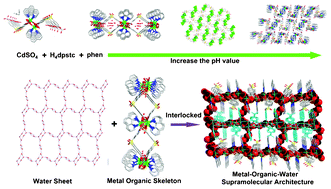pH modulated assembly in the mixed-ligand system Cd(ii)–dpstc–phen: structural diversity and luminescent properties†
Abstract

* Corresponding authors
a
Key Laboratory of Coal to Ethylene Glycol and Its Related Technology, State Key Laboratory of Structure Chemistry, Fujian Institute of Research on the Structure of Matter, Chinese Academy of Sciences, Fuzhou, Fujian, China
E-mail:
hmc@fjirsm.ac.cn
Fax: +86-591-83794946
Tel: +86-591-83792460

 Please wait while we load your content...
Something went wrong. Try again?
Please wait while we load your content...
Something went wrong. Try again?
S. Zhang, F. Jiang, M. Wu, L. Chen, J. Luo and M. Hong, CrystEngComm, 2013, 15, 3992 DOI: 10.1039/C3CE27108K
To request permission to reproduce material from this article, please go to the Copyright Clearance Center request page.
If you are an author contributing to an RSC publication, you do not need to request permission provided correct acknowledgement is given.
If you are the author of this article, you do not need to request permission to reproduce figures and diagrams provided correct acknowledgement is given. If you want to reproduce the whole article in a third-party publication (excluding your thesis/dissertation for which permission is not required) please go to the Copyright Clearance Center request page.
Read more about how to correctly acknowledge RSC content.
 Fetching data from CrossRef.
Fetching data from CrossRef.
This may take some time to load.
Loading related content
